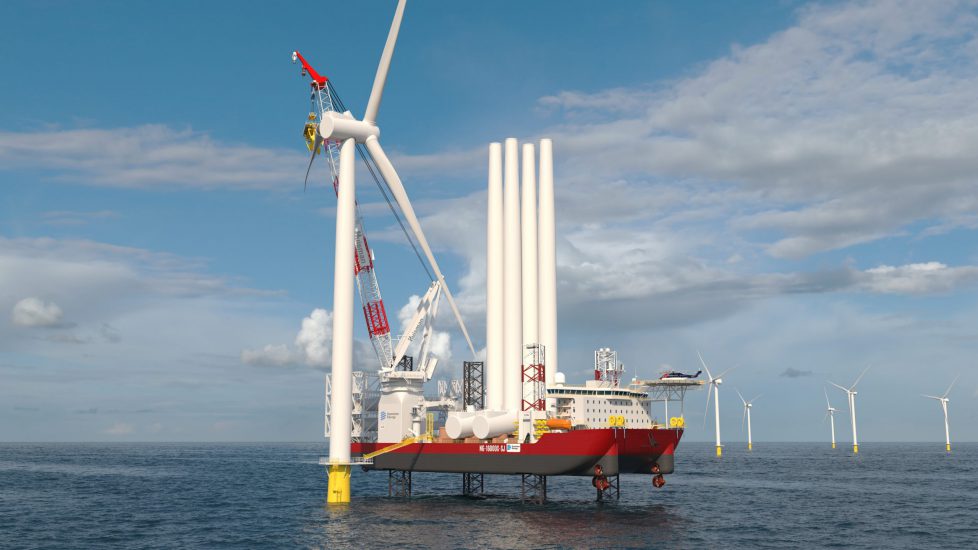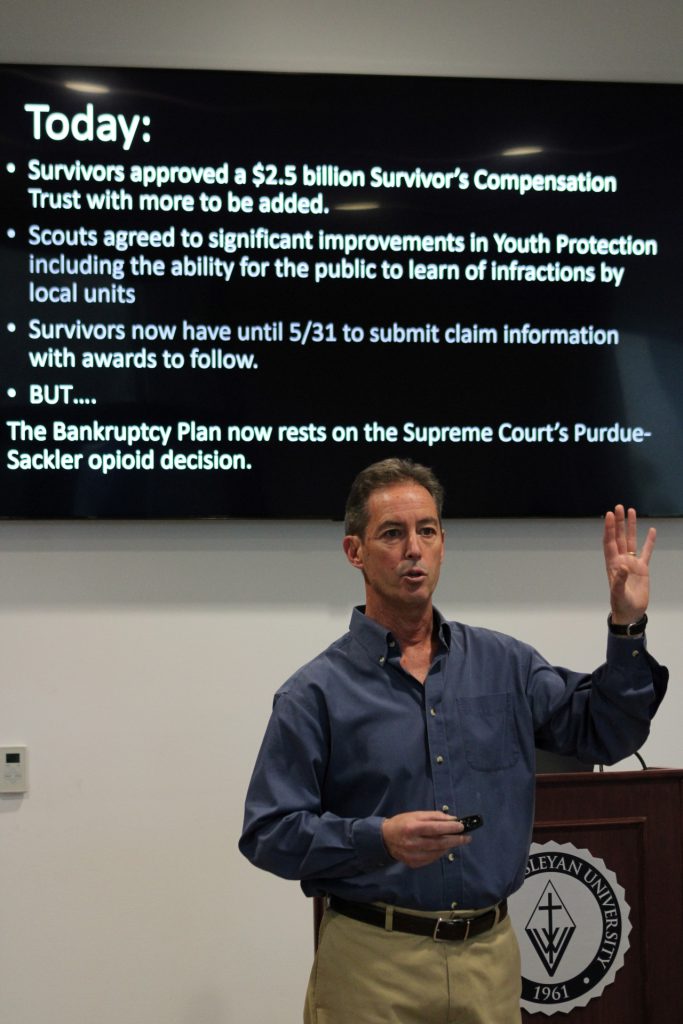Computer-generated image of the vessel expected to transport materials for construction at offshore site.
Joel Rubin|Courtesy
By 2026, Virginia Beach will have a brand new energy source: the Coastal Virginia Offshore Wind Project (CVOW), which will provide 2.6 gigawatts of energy to over 660,000 Virginia homes, according to Dominion Energy.
The CVOW is a project from Dominion Energy. They will conduct the placement and operation of the 176 wind turbines, 27 miles from the coast of Virginia Beach. This project could mark massive changes to Virginia Beach’s economy, according to Joel Rubin, president of The Rubin Communications Group and author of “Windsdays.”
“Windsdays” is a project promoting the CVOW to the citizens of Hampton Roads through a newsletter every Wednesday. This newsletter highlights supporters of the CVOW in Hampton Roads, from local businesses to individuals including political officials.
According to Rubin, the project will begin construction this May. The Dominion Energy website states that the project’s construction will create 900 Virginian jobs, with 60% of these in Hampton Roads.
On the positive impacts of the project, Rubin described that it provided an interesting new work opportunity for young people in the area that emphasizes the importance and usability of trade skills. “We’ve been pushing everybody, not that there’s anything wrong with it, to go to a four-year college, and we kind of forgot that there’s a lot of skills out there that you can learn without having to get a four-year bachelor’s degree,” Rubin said.
VWU alumna Lauren Faulkner, previously worked with Windsdays, agreed that the project will help bring in jobs. “I really think the biggest benefit for the project has to be the jobs that it’s going to bring to the Hampton Roads area,” Faulkner said.
However, Faulkner expressed concern that the jobs might not be filled. “It’s a weird time where it’s not necessarily an employer’s market; it’s more of an employee’s market,” Faulkner said. She elaborated and said she believes the 2026 deadline may be difficult to hit if the workforce is not fully filled.
The Dominion Energy website shows that they have contracted out some of the labor to Siemens Gamesa, Seajacks, DEME Offshore, the Prysmian Group and Skanska. These organizations will assist with the creation of materials necessary for the wind turbines, as well as the construction and installation of the turbines.
Even with the help, Rubin expressed concerns of the timeline as well. “It’s not that far away frankly,” Rubin said. “They can’t even really do a lot of the work out there all year long, one because of weather, two because of migration of whales.”

Map depicts Coastal Virginia Offshore Wind Project.
Joel Rubin|Courtesy
Rubin said this meant construction could only take place from May to November each year, and that the operation is very technical and precise in order to stay on track.
Professor of Earth Science, Dr. Christopher Haley, and Professor of Biology and Environmental Science, Dr. Maynard Schaus, both expressed interest in the project, and hoped that connections could be made with VWU in order to provide students with opportunities such as internships within the project.
While Schaus said that Virginia Wesleyan has not had the type of involvement in this particular project that they have had in previous local projects, he expressed optimism about its implementation. “It’s great to see that Dominion is pursuing alternative forms of energy for our area,” Schaus said.
Schaus said that he has explored the implications of offshore wind turbines in the classroom, specifically in his course, “Environmental Problems and Solutions.”
Haley expressed that he believes concerns, such as effects on wildlife, will not be a large issue with this project due to the modern construction of the project, and that projects like this are necessary to move towards a greener future. He specifically mentioned that as a shift to electric vehicles places a higher stress on the electric grid, the energy used to power the grid must come from renewable sources in order to maintain the original green intentions.
“Every form of energy has drawbacks to it,” Schaus said, so it is necessary to assess the impact of different options on climate change and make decisions to limit negative effects.


